eOrganic authors:
Fulya Baysal-Gurel, Department of Plant Pathology, Ohio State University
Sally Miller, Department of Plant Pathology, Ohio State University
Introduction
Lettuce (Lactuca sativa L.) is the world’s most popular leafy salad vegetable. Various types of lettuce are cultivated across the world, primarily for human consumption of their fresh leaves. Among these types of lettuce are leaf (loose-leaf lettuce), Cos (romaine), crisphead (iceberg), butterhead, stem (asparagus lettuce), and numerous others, which have limited production. Lettuce responds well to a moist, rich soil, full exposure to sun and cool weather conditions. It is typically a crop of temperate climates. It is grown everywhere where the average temperature remains between 45°F and 65°F during the growing season. Although primarily adapted to colder climates, there are summer and winter varieties that can be used in other seasons. Sandy peat and muck, deep black sandy loams and loams are the most suitable types of soil. Lettuce is slightly tolerant to acidic soils, but the ideal pH ranges between 6.0 and 6.8.
One of the major challenges facing organic lettuce producers is disease management. The losses in lettuce production due to disease can be significant and devastating under favorable conditions. The primary lettuce diseases are bottom rot (Rhizoctonia solani), damping-off (Pythium spp. and R. solani) (Figure 1a and b), downy mildew (Bremia lactucae) (Figure 2), drop (Sclerotinia sclerotiorum and S. minor) (Figure 3), gray mold (Botrytis cinerea) (Figure 4), powdery mildew (Erysiphe cichoracearum) (Figure 5), Septoria leaf spot (Septoria lactucae), bacterial leaf spot (Xanthomonas campestris pv. vitians) (Figure 6), soft rot (Pectobacterium carotovorum subsp. carotovorum) (Figure 7), aster yellows phytoplasma (Figure 8), lettuce mosaic virus (LMV), Turnip mosaic virus (TuMV), Beet western yellows virus (BWYV) and Tomato spotted wilt virus (TSWV). Preventive measures against such diseases have priority in organic lettuce production.

Figure 1a and b: Damping-off (Rhizoctonia solani). Figures credit: Fulya Baysal-Gurel, The Ohio State University
Figure 2: Downy mildew (Bremia lactucae). Figure credit: Fulya Baysal-Gurel, The Ohio State University
Figure 3: Drop (Sclerotinia minor). Figure credit: Sally A. Miller, The Ohio State University
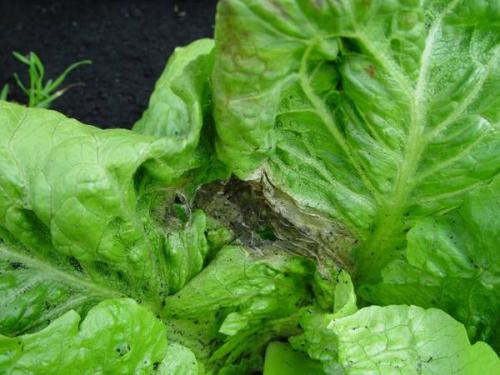
Figure 4: Gray mold (Botrytis cinerea). Figure credit: Sally A. Miller, The Ohio State University
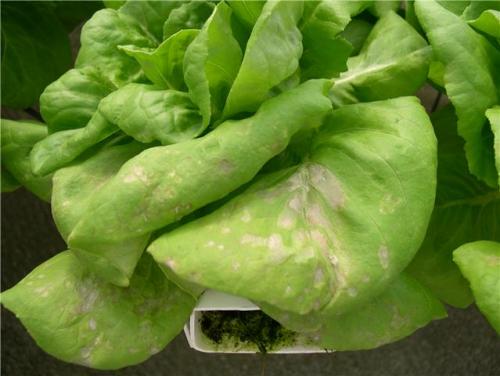
Figure 5: Powdery mildew (Erysiphe cichoracearum). Figure credit: Sally A. Miller, The Ohio State University
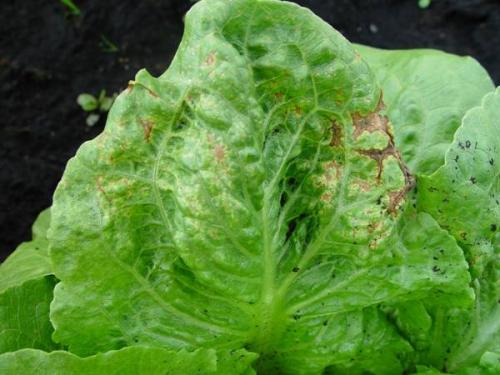
Figure 6: Bacterial leaf spot (Xanthomonas campestris pv. vitians). Figure credit: Sally A. Miller, The Ohio State University
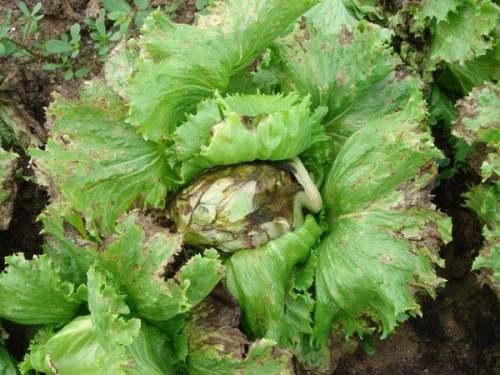
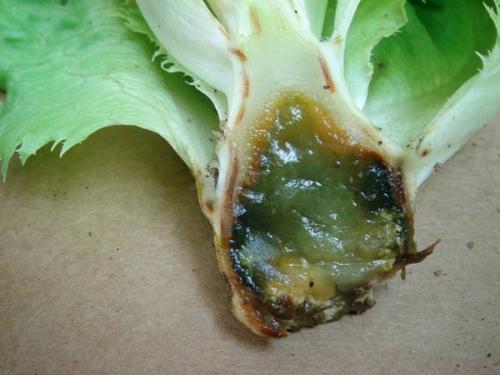
Figure 7: Soft rot (Pectobacterium carotovorum subsp. carotovorum). Figure credit: Sally A. Miller, The Ohio State University
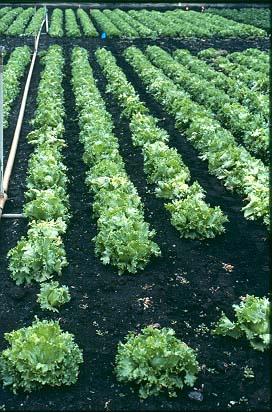
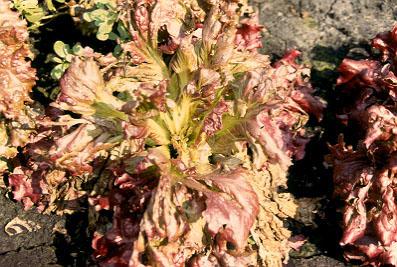
Figure 8: Aster yellows phytoplasma. Figure credit: Sally A. Miller, The Ohio State University
Disease Management Strategies
Seed selection and seed health treatments
The planting of pathogen-free organically produced lettuce seed is an important first step in managing diseases. Further information on organic seed selection can be found in the related eOrganic article Sourcing Certified Organic Seed and the National Organic Program Regulations. There are some seed treatments, such as hot-water sanitation or National Organic Program (NOP)-compliant protectants that can be used by organic farmers to eradicate some pathogens from seed. Hot-water seed treatments (118 ºF for 30 min) can greatly decrease seedborne inoculum of some disease such as Septoria leaf spot and bacterial leaf spot. For more information see the Ohio State University Extension Fact Sheet Hot Water Treatment of Vegetable Seeds to Eradicate Bacterial Plant Pathogens in Organic Production Systems (Miller and Ivey, 2005). Treatments of lettuce seed with solutions of aqueous 3 to 5% hydrogen peroxide may also effectively reduce or eradicate the bacterial leaf spot pathogen (X. campestris pv. vitians) from heavily infested lettuce seed. However, hydrogen peroxide treatments at a concentration of 5% reduced seed germination up to 28% compared with controls. On the other hand, small but significant reductions in germination were observed on seed lots treated with 3% hydrogen peroxide (Pernezny et al., 2002). Treatment of lettuce seed with solutions of 0.52% sodium hypochlorite for 5 min soaking time also reduced bacterial leaf spot (Sahin and Miller, 1997). However, chlorine seed treatment of organic seed must be followed by a rinse with potable water. Check with your suppliers of organic seed regarding any seed treatments they apply or use to suppress seed-borne diseases. Also, growers should check with their certifying agency regarding any seed treatments that they intend to apply prior to planting. For more information on organic seed treatments, see the related eOrganic article Organic Seed Treatments and Coatings.
Variety selection
Many cultivars (varieties) of lettuce have been developed that are resistant and/or tolerant to specific diseases. The terms resistance or tolerance do not mean that the plant is completely immune to disease. They refer to a plant's ability to overcome, to some degree, the effect of the pathogen. Also, no variety is resistant or tolerant to all diseases. Resistant varieties should always be used in combination with other management practices. Further information on disease resistant and/or tolerant lettuce varieties can be found in databases provided by Cornell University (http://vegetablemdonline.ppath.cornell.edu/).
Organic Amendments
The addition of organic matter such as good quality compost can aid in reducing diseases caused by soilborne pathogens. Organic matter improves soil structure and its ability to hold water and nutrients; it also supports microorganisms that contribute to biological control. The incidence of lettuce drop and survival rate of sclerotia of S. sclerotiorum can be reduced by the addition of stable manure (a mixture of straw, horse dung, and urine), fowl manure (a mixture of wood shavings and chicken droppings), and Lucerne hay to the field. Note: In order to be used for organic production, animal manure must be fully composted or else incorporated into the soil at least 120 days prior to the harvest of organic lettuce. Incorporating approved amendments, such as blood meal, fish meal, or feather meal, into soil can also increase the marketable yield and quality of lettuce (Asirifi et al., 1994).
Propagation and Nursery Management
Lettuce can be either transplanted or direct seeded, depending mostly on cost and availability of transplants and the time of year. Use of transplants will help manage some diseases. Direct seeding depths are about 1/4 to 3/8 inch. In case of heavier soils, shallower depth is recommended to reduce the risk of damping-off disease problems. Raised beds are ideal for lettuce production. They help prevent damage from soil compaction and flooding. They also improve airflow around the plants resulting in reduced disease incidence. Over-watering or planting in poorly drained soils must be avoided to prevent root diseases and seed decay. Plants should be irrigated without applying water to the foliage, which helps reduce most foliar lettuce diseases, particularly bacterial leaf spot. In research on irrigation methods, lettuce drop incidence was significantly lower and yields were higher in plots under subsurface drip irrigation compared with furrow irrigation (Subbarao et al., 1997). In another study, subsurface drip irrigation reduced human health risks when microbial-contaminated water was used for irrigation (Song et al., 2006).
Sanitation
Many pathogens survive between crops in or on the residue from diseased plants, so it is important to remove as much of the old plant debris as possible. When lettuce drop is observed in the production area, the diseased plants and soil immediately surrounding the infected plant should be removed. Weeds should be eliminated as they may harbor pathogens or serve as hosts for insects that transmit viruses, aster yellows phytoplasma and other pathogens. Frequent disinfection of harvest tools will also help prevent the spread of soft rot, post harvest pathogens such as gray mold, and microbial contaminants that may be human pathogens.
Rotation
Crop rotation has been used successfully for disease management in different pathosystems. Hence, it has drawn increased attention as an important disease management tool in organic agriculture. A good rotation scheme is to treat members of the same plant family as a group and rotate based on groups rather than individual crops. For example, lettuce should be rotated with vine crops, tomatoes, or cole crops but not other types of lettuce, chicory or endive. It is important to note that one difficulty in using crop rotation to control some diseases is the limited availability of crops for rotation. For example, Sclerotinia on lettuce cannot be managed with rotation because most crops are hosts of Sclerotinia and the pathogen can survive for long periods between host crops. Broccoli (Brassica oleracea), used as a green manure, recently has been shown to reduce the number of S. minor sclerotia in soil.
Row Covers
Floating row covers are an excellent barrier to some early pests that vector disease, such as leafhoppers, thrips, whiteflies and aphids. Row covers are made of lightweight fabric that can be laid directly over plants or supported with hoops. The fabric needs to be secured to keep pests out. This can be accomplished by using metal staples made for this purpose. Row covers should be removed when temperatures regularly reach the high 80’s.
Materials
Early detection is important to manage diseases. It is therefore important to scout plants regularly and know which diseases are present in the crop. When preventive and cultural methods for disease control are insufficient to manage a disease, National Organic Program (NOP) compliant inputs can be applied.
NOTE: Before applying ANY pest control product, be sure to 1) read the label to be sure that the product is labeled for the crop and the disease you intend to control, 2) read and understand the safety precautions and application restrictions, and 3) make sure that the brand name product is listed in your Organic System Plan and approved by your certifier. For more information on how to determine whether a disease management product can be used on your farm, see Can I Use this Product for Disease Management on my Organic Farm?
Copper oxide can be used against lettuce downy mildew disease. However, over-application can lead to copper accumulation in the soil, contamination of run-off water, and toxicity to non-target organisms. Sulfur products can provide control for powdery mildew. Biorational products represent an important option for the management of plant diseases. On lettuce, Contans® (Coniothyrium minitans) has been effective in reducing the incidence of lettuce drop by as much as 50% in greenhouse crops (Budge and Whipps, 2001). In another study, two applications of Contans®, one at planting and one at post-thinning, controlled lettuce drop caused by S. sclerotiorum in a desert lettuce production system (Chitrampalam et al., 2008 and 2010). A list of biorationals and up-to-date information regarding OMRI approval is available at the following database http://attra.ncat.org/attra-pub/biorationals/. For more information see the eOrganic article Biopesticides for Plant Disease Management in Organic Farming.
References and Citations
- Andrews, N. and B. Baker. 2009. Can I Use this Product for Disease Management on my Organic Farm? [Online]. Available at: http://www.extension.org/article/18360 (verified 26 March 2010).
- Asirifi, K.N., Morgan, W.C., Parbery, D.G. 1994. Suppression of Sclerotinia Soft-Rot of Lettuce with Organic Soil Amendments. Australian Journal of Experimental Agriculture 34, 131-136. Available at: http://www.publish.csiro.au/?act=view_file&file_id=EA9940131.pdf
- ATTRA Biorationals: Ecological Pest Management Database [Online]. R. Dufour. Available at: http://attra.ncat.org/attra-pub/biorationals/. (verified 26 March 2010).
- ATTRA Organic Seed Suppliers Search [Online]. K. L. Adam. Available at: http://attra.ncat.org/attra-pub/organic_seed/ (verified 26 March 2010).
- Budge, S. P., and Whipps, J. M. 2001. Potential for integrated control of Sclerotinia sclerotiorum in glasshouse lettuce using Coniothyrium minitans and reduced fungicide application. Phytopathology 91:221-227. Available at: http://apsjournals.apsnet.org/doi/pdf/10.1094/PHYTO.2001.91.2.221
- Chitrampalam, P., Figuli, P. J., Matheron, M. E., Subbarao, K. V., and Pryor, B. M. 2008. Biocontrol of lettuce drop caused by Sclerotinia sclerotiorum and S. minor in desert agroecosystems. Plant Dis. 92:1625-1634. Available at: http://apsjournals.apsnet.org/doi/pdf/10.1094/PDIS-92-12-1625
- Chitrampalam, P., Turini, T. A., Matheron, M. E., and Pryor, B. M. 2010. Effect of sclerotium density and irrigation on disease incidence and on efficacy of Coniothyrium minitans in suppressing lettuce drop caused by Sclerotinia sclerotiorum. Plant Dis. 94:1118-1124. Available at: http://apsjournals.apsnet.org/doi/pdf/10.1094/PDIS-94-9-1118.
- Gatch, E. 2009. Organic Seed Treatments and Coatings [Online]. Available at: http://www.extension.org/article/18952 (verified 26 March 2010).
- Lumsden, R. D., Millner, P. D., and Lewis, J. A. 1986. Suppresion of lettuce drop caused by Sclerotinia minor with composted sewage sludge. Plant Disease 70:197-201. Available at: http://www.apsnet.org/publications/PlantDisease/BackIssues/Documents/1986Articles/PlantDisease70n03_197.pdf
- Miller, S. A. and M. L. Ivey. 2005. Hot water treatment of vegetable seeds to eradicate bacterial plant pathogens in organic production systems [Online]. Ohio State Extension Bulletin HYG-3086-05. Available at: http://ohioline.osu.edu/hyg-fact/3000/pdf/3086.pdf (verified 26 March 2010).
- National Organic Program [Online]. Available at: http://www.ams.usda.gov/nop/ (verified 26 March 2010)
- OMRI Organic Seed Database [Online]. Available at: http://seeds.omri.org/ (verified 26 March 2010).
- Raudales, R.E. and B. McSpadden Gardener. 2008.Microbial Biopesticides for the Control of Plant Diseases in Organic Farming [Online]. Ohio State Extension Bulletin HYG-3310-08. Available at: http://ohioline.osu.edu/hyg-fact/3000/pdf/HYG_3310_08.pdf (verified 26 March 2010).
- Sahin, F., and Miller, S. A. 1997. Identification of the bacterial leaf spot pathogen of lettuce, Xanthomonas campestris pv. vitians in Ohio, and assessment of cultivar resistance and seed treatment. Plant Dis. 81:1143-1146. Available at: http://apsjournals.apsnet.org/doi/pdf/10.1094/PDIS.1997.81.12.1443
- Song, I., S. W. Stine, C. Y. Choi, and C. P. Gerba, 2006, Comparison of crop contamination by microorganisms during subsurface drip and furrow irrigation. J. Environ. Engin. 132: 1243-1248.
- Subbarao, K. V., Hubbard, J. C., and Schulbach, K. F. 1997. Comparison of lettuce diseases and yield under subsurface drip and furrow irrigation. Phytopathology 87:877-883. Available at: http://apsjournals.apsnet.org/doi/pdf/10.1094/PHYTO.1997.87.8.877
- Vegetable MD Online- Media Services at Cornell University [Online]. Available at: http://vegetablemdonline.ppath.cornell.edu/ (verified 26 March 2010).



